13 Different Fuzzy Cactus Types (With Pictures)
-
Visnja Radosavljevic
- Last updated:
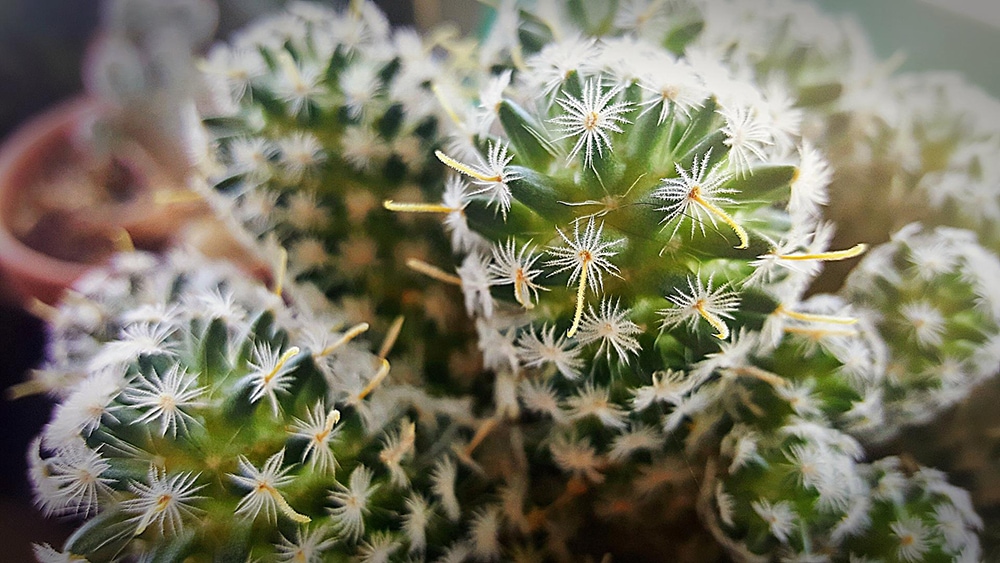
All cactuses are unique, but some of the most beautiful cactuses that stand out from the crowd have a fuzzy coat on their surface. Although they are not too common, there are several cacti species that are fuzzy, and we wanted to provide more details about them. After reading this article, you’ll become familiar with various hairy cactus types and learn all the requirements to grow them in the comfort of your home.
The 13 Different Types of Fuzzy Cactus
1. Old Lady Cactus
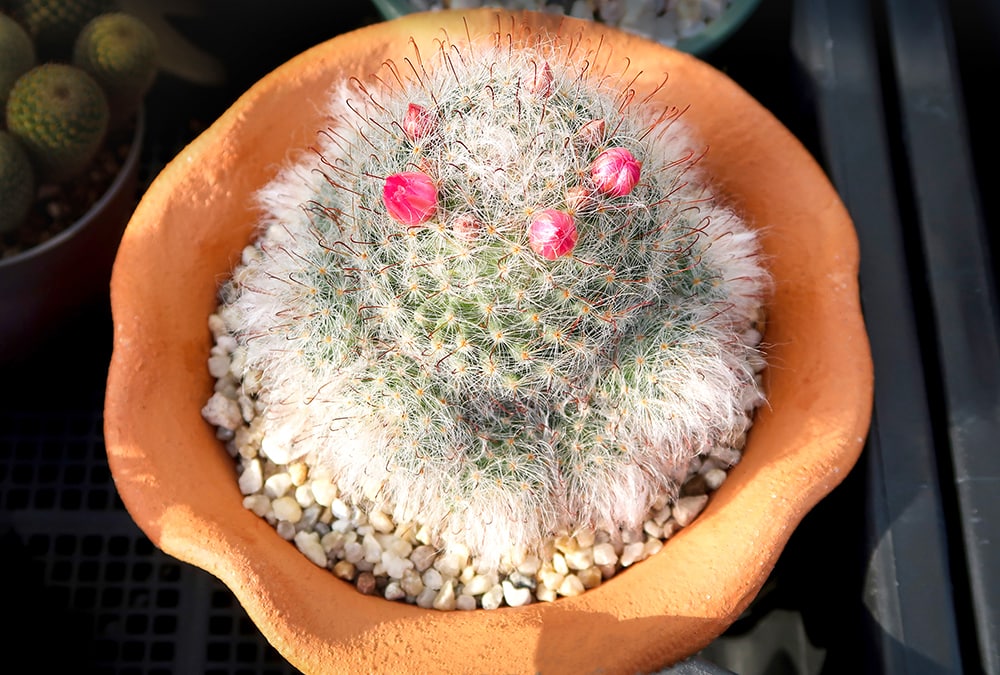
| Scientific name: | Mammillaria hahniana |
| Sun: | Full sun/partial shade |
| Water: | Water when the topsoil becomes dry |
| Soil: | Well-draining |
The old lady cactus is native to Mexico. It’s a low-maintenance plant that beginner gardeners can grow with ease. It has a fuzzy coat and can develop lovely pink flowers. It’s a round-shaped cactus that has up to 30 spines per areole. The old lady cactus typically grows 4 inches tall and around 8 inches wide.
Over time, it will develop tiny offsets you can divide to grow new plants. These cacti are easy to take care of as they need watering only when the topsoil becomes dry. They don’t require fertilization, and you can grow them in full sun or partial shade.
2. Feather Cactus

| Scientific name: | Mammillaria plumosa |
| Sun: | Full sun/partial shade |
| Water: | Water when the topsoil becomes dry |
| Soil: | Well-draining |
The feather cactus is another stunning hairy plant you can grow in your home or garden. It’s native to Mexico and has a long lifespan, so as long as you treat it with care, it will last for years. It typically grows in spherical or columnar form and can have multiple clusters.
The feather cactus grows 4 inches high, while its cluster width can reach over 3.5 feet in 5 to 10 years. Like most cacti, it needs watering when the topsoil is dry and grows best in full sun and partial shade.
3. Old Man Cactus
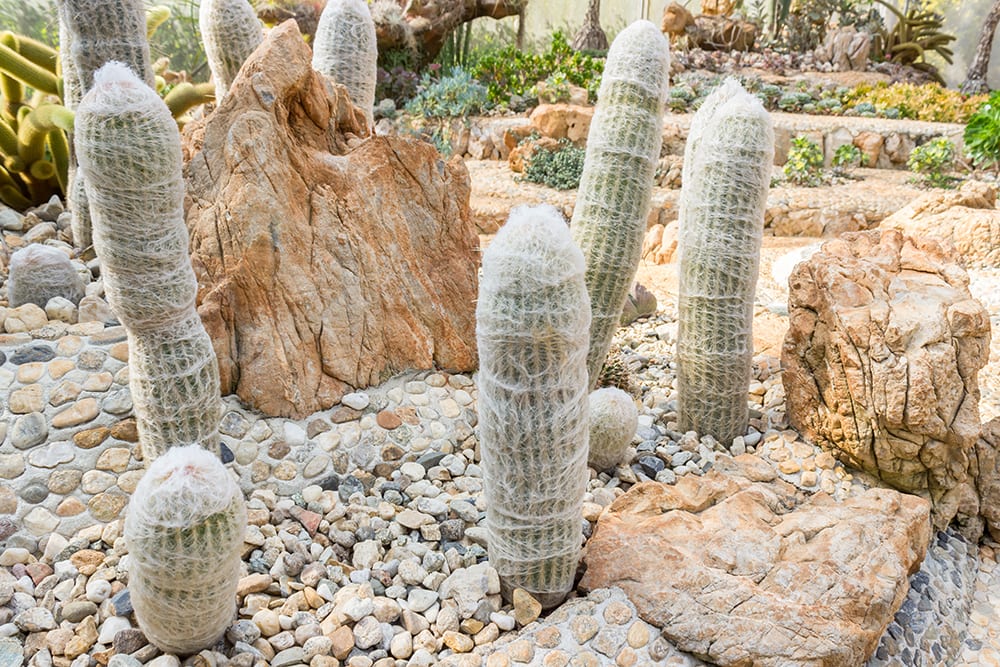
| Scientific name: | Cephalocereus senilis |
| Sun: | Full sun/partial shade |
| Water: | Water when the topsoil becomes dry |
| Soil: | Well-draining, rich |
The old man cactus is another fuzzy variety that stands out, especially because it can reach over 45 feet when grown outside. If you grow the cactus inside, you can expect it to be 3 feet tall.
The old man cactus thrives in the sun during the summer, so it’s best to plant it in full sun or partial shade, allowing it to have 6 to 8 hours of direct sun exposure. During winter, it needs a temperature between 50°F and 60°F.
4. Peruvian Old Man Cactus
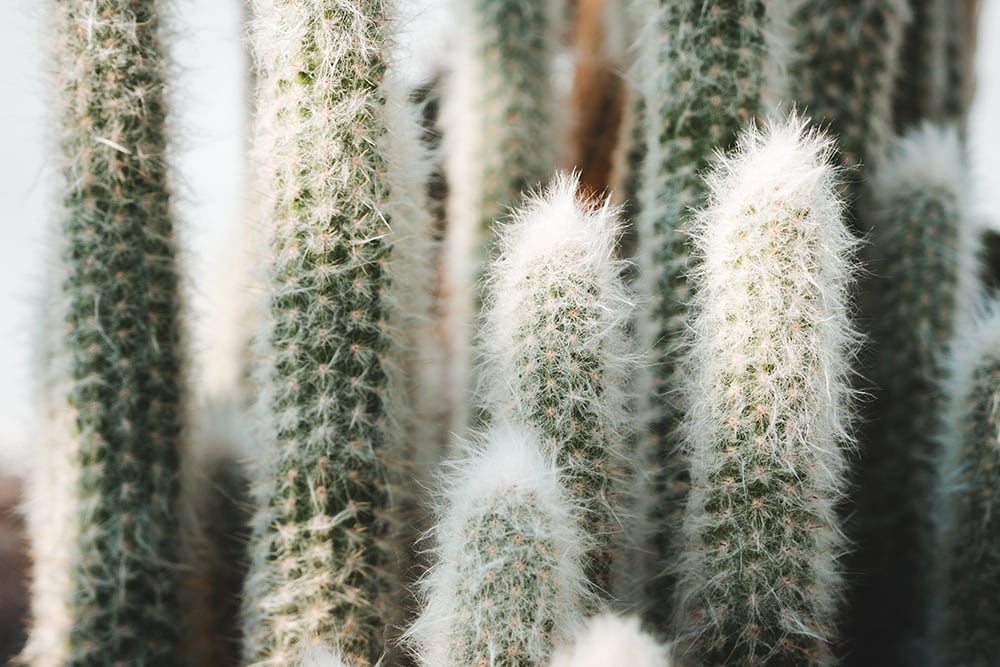
| Scientific name: | Espostoa lanata |
| Sun: | Full sun/partial shade |
| Water: | Water when the topsoil becomes dry |
| Soil: | Well-draining |
The Peruvian old man cactus resembles the old man cactus. However, it has more dense hair on its stems. It’s native to Peru and is a pretty rare species. This cactus can vary in size, reaching between 5 and 23 feet.
After a couple of years, these cacti can develop flowers ranging from purple to white and are typically hidden by the wooly coat. When you provide this cactus with the needed care, it will grow quickly.
5. Monkey’s Tail
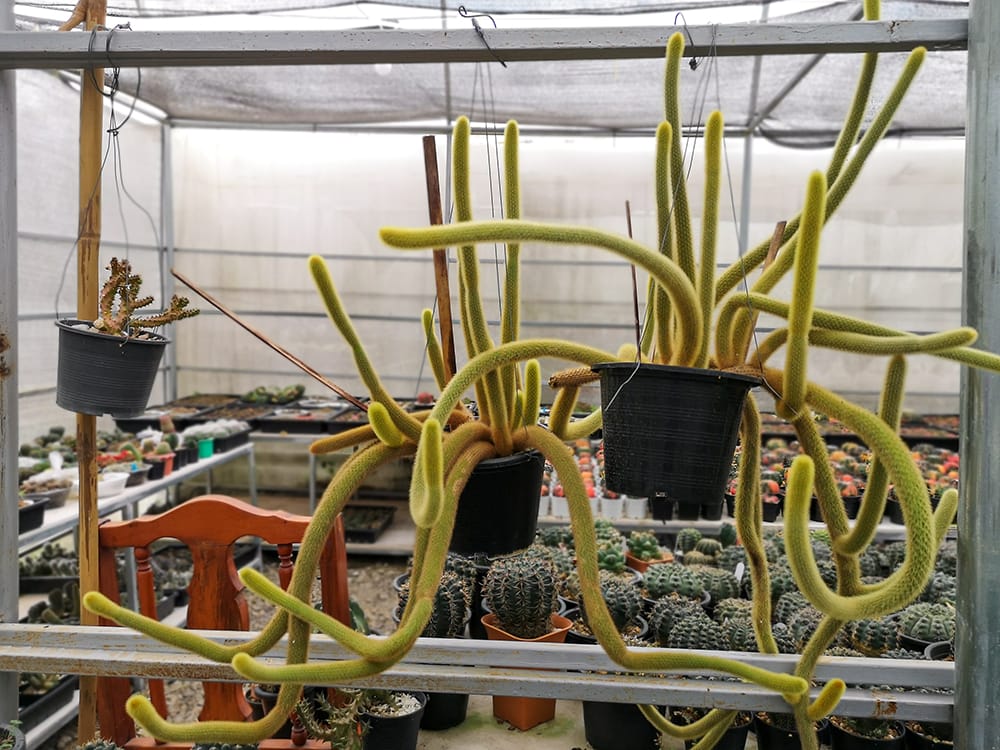
| Scientific name: | Cleistocactus colademononis |
| Sun: | Full sun/partial shade |
| Water: | Water when the topsoil becomes dry |
| Soil: | Rocky, well-drained, organic |
The monkey’s tail cactus got its name due to its elongated shape with hairy, white spines. It has become quite popular over the last few years because of its attractive appearance and low-maintenance qualities.
It produces bright, red flowers during spring and summer. These cacti grow quite fast; a single stem can grow over 1 foot yearly. Like most cacti, it needs full sun or partial shade to prosper and water only when the soil becomes dry.
6. Grizzly Bear Prickly Pear

| Scientific name: | Opuntia polyacantha |
| Sun: | Full sun/partial shade |
| Water: | Water when the topsoil becomes dry |
| Soil: | Well-draining |
The grizzly bear prickly pear has long, thin, bluish-green stems and white, hairy spines. It grows bright yellow, pink, red, and purple flowers in summer. The grizzly bear grows between 6 and 18 inches high, and you can grow it in multiple USDA hardiness zones.
Although they are not too common, their popularity is growing every year. If you plant this cactus in full sun or partial shade and avoid overwatering it, it will thrive.
7. Hairy Stemmed Rhipsalis
| Scientific name: | Rhipsalis pilocarpa |
| Sun: | Full shade |
| Water: | Water when the topsoil becomes dry |
| Soil: | Well-drained, rich |
The hairy-stemmed Rhipsalis resembles a plant more than an actual cactus. It grows as a small shrub with multiple cylindrical stems that can become up to 16 inches long.
Each stem has a small, white, bell-shaped flower at the top. Unlike most cacti, it grows best in full shade because too much sun can burn the leaves.
8. Powder Puff Cactus
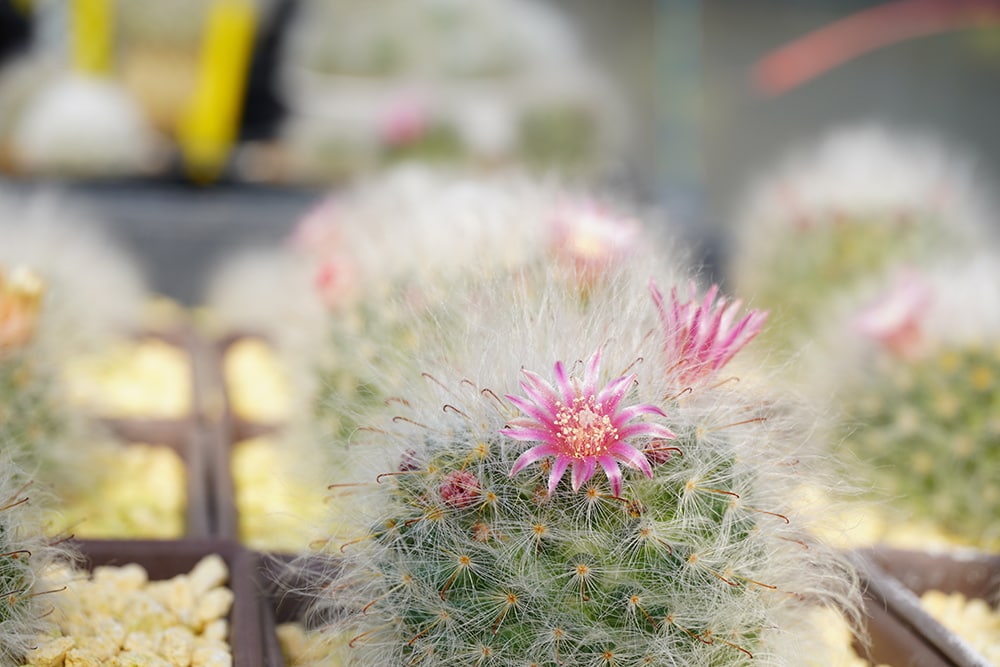
| Scientific name: | Mammillaria bocasana |
| Sun: | Full sun |
| Water: | Water when the topsoil becomes dry |
| Soil: | Well-drained, sandy |
The powder puff cactus is a hairy, smaller cactus native to Mexico. It has a ball-like shape and grows about 4 inches tall. The whole body of this cactus is covered in dense, fuzzy spikes that are silky and soft.
It flowers in spring or summer, bearing striking, bright pink or white flowers. It’s one of the easiest cacti you can grow, so it’s an excellent choice for people looking for a unique, low-maintenance plant.
9. Hairy Roger Cactus
| Scientific name: | Opuntia engelmannii |
| Sun: | Full sun/partial shade |
| Water: | Water when the topsoil becomes dry |
| Soil: | Well-drained |
The hairy Roger cactus is native to Mexico and the USA. It has irregular-shaped pads covered in soft, hairy spikes that can grow relatively high, typically between 3 and 6 feet. Some people mistake it for the prickly pear cacti since it belongs to the same species.
During spring and early summer, these cacti grow stunning yellow or pink flowers, making their appearance even more interesting. The hairy Roger cactus thrives in full sun or partial shade and needs well-draining soil to succeed.
10. Old Man of The Andes

| Scientific name: | Oreocereus celsianus |
| Sun: | Full sun/partial shade |
| Water: | Water when the topsoil becomes dry |
| Soil: | Well-draining |
The old man of the Andes is a fuzzy cactus with soft hairs covering it from top to bottom. You can notice the orange spikes that protrude from the wool. You can grow it indoors and outdoors, but ensure you provide the plant with enough sun during the day. Typically, the old man of the Andes grows around 10 feet tall and 24 inches wide. It blooms in spring, bearing pinkish-purple flowers.
11. Peruvian Old Lady Cactus
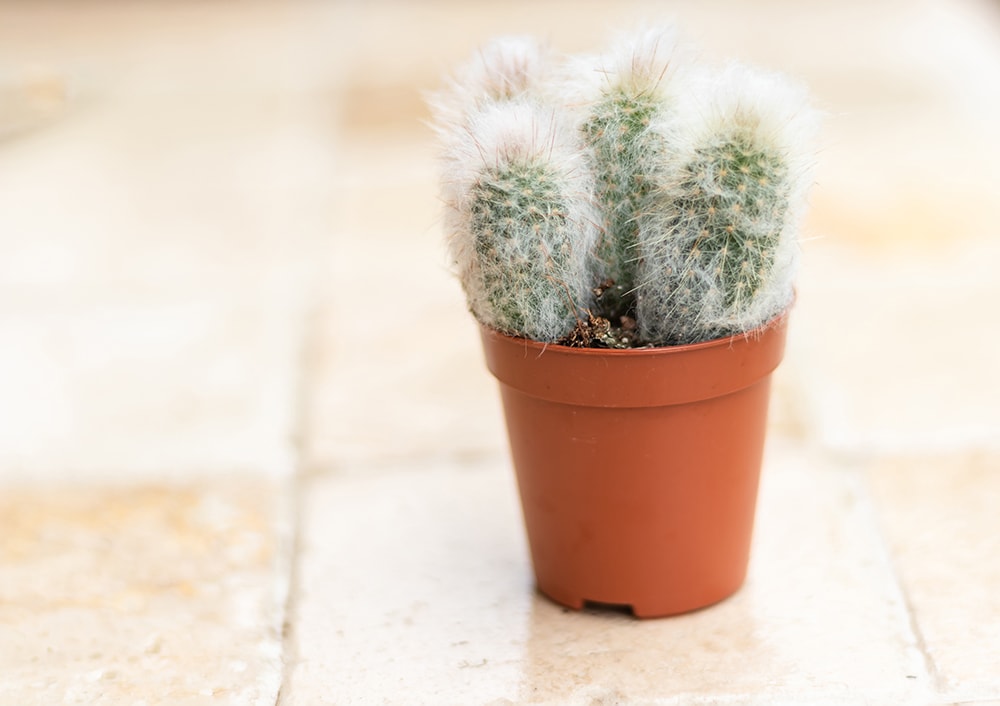
| Scientific name: | Espostoa melanostele |
| Sun: | Full sun/partial shade |
| Water: | Water when the topsoil becomes dry |
| Soil: | Well-drained, rich, organic |
The Peruvian old lady cactus is another fuzzy cactus with a thick, wool-like coat that hides yellow, red, or orange spines underneath. It grows slowly but can reach over 7 feet in its natural habitat. However, if you grow it in a pot, it will be small and reach only around 10 inches.
Unfortunately, they rarely reach maturity. For the Peruvian old lady to thrive, you must place it in full sun or partial shade and ensure the soil is well-drained, rich, and organic.
12. Polar Bear Cactus
| Scientific name: | Austrocylindropuntia Floccosa |
| Sun: | Full sun/partial shade |
| Water: | Water when the topsoil becomes dry |
| Soil: | Well-draining |
The polar bear cactus is a rare species known as the waraqu. It’s native to Peru and Bolivia and has a cylindrical shape, with dense wool-like hair and yellowish spikes that show under the fuzzy surface.
The polar bear blooms in spring, bearing bright yellow or orange flowers. They are not too large and typically reach around 6 inches in height.
13. Park Hedgehog Cactus
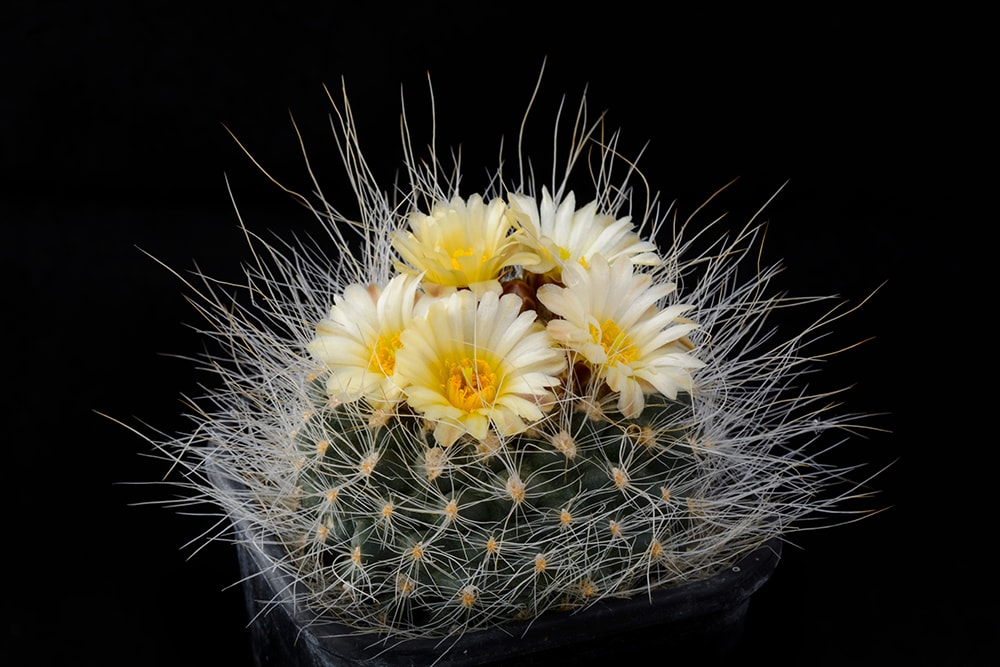
| Scientific name: | Pediocactus Paradinei |
| Sun: | Full sun/partial shade |
| Water: | Water when the topsoil becomes dry |
| Soil: | Well-drained |
The park hedgehog cactus, or the pincushion hedgehog cactus, is a small species with multiple spikes covered in a wool coat. Typically, this cactus reaches a maximum height of 2 inches.
The yellowish-brown spikes emerge from the hair, and it bears large yellow, white, or pink flowers during spring or early summer. It’s among the most cold-hardy hairy types you can find, making it an excellent option for colder climates.
Conclusion
There are several hairy cactus types you can grow in your home or yard, but it depends on which cacti you like the most. Before deciding to plant one of the species we mentioned in the list, check out their characteristics to ensure that the cacti will fit your requirements. You cannot go wrong with any of the cacti since each one is unique, and the fuzzy surface will make it stand out from your other plants.
See more: 11 Mammillaria Cactus Types (With Pictures)
Featured Image Credit: ThreeMilesPerHour, Pixabay
Contents
